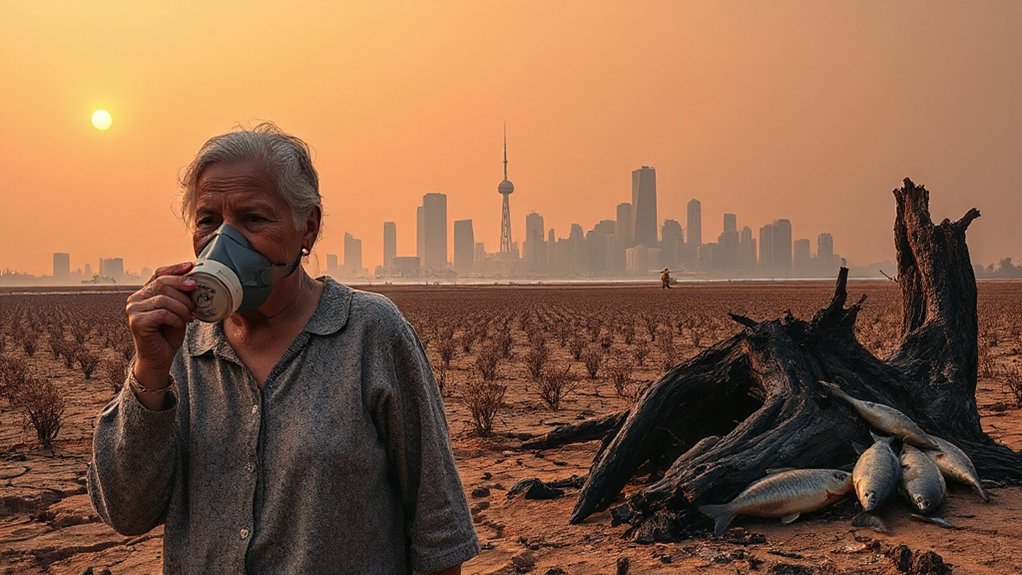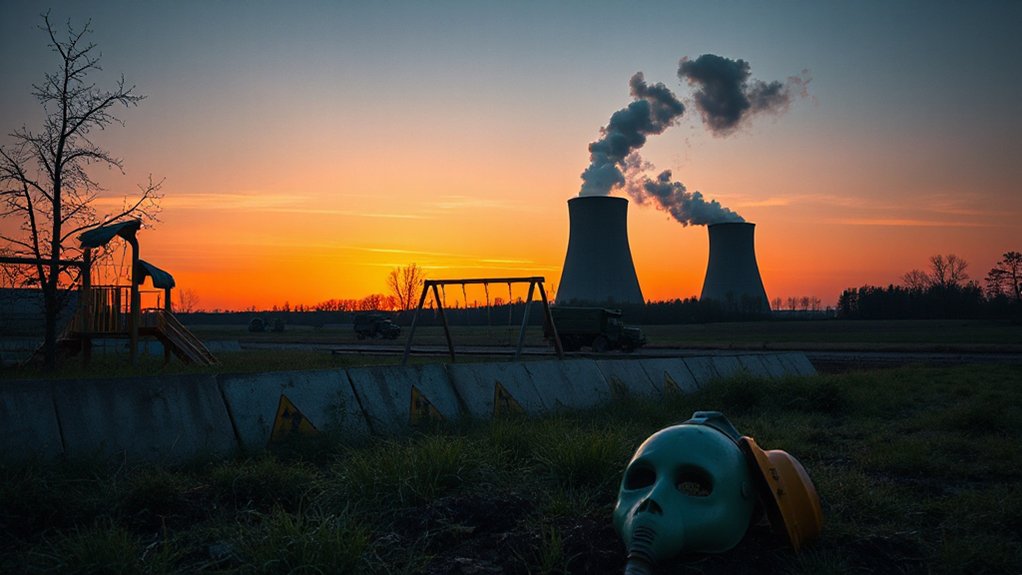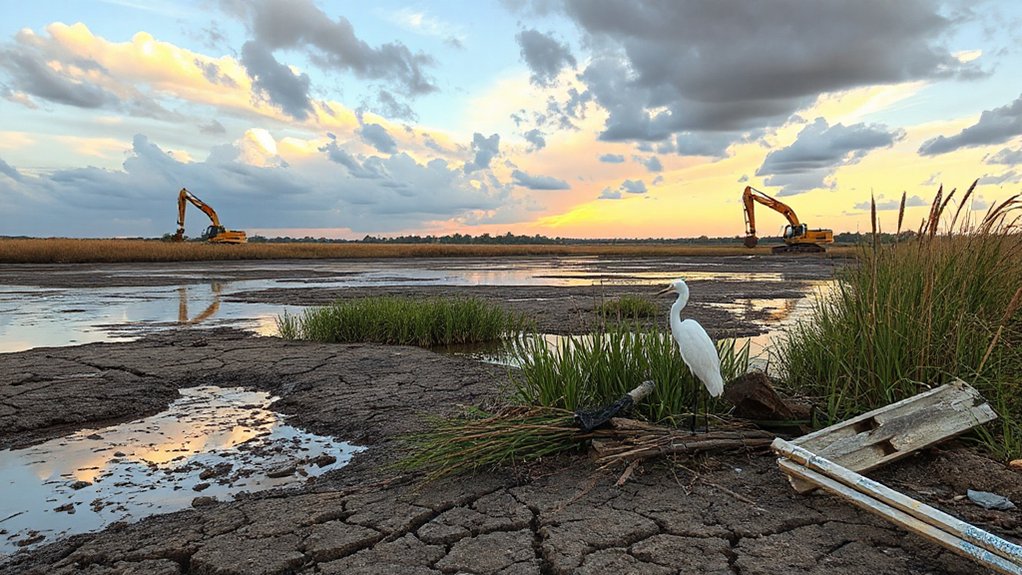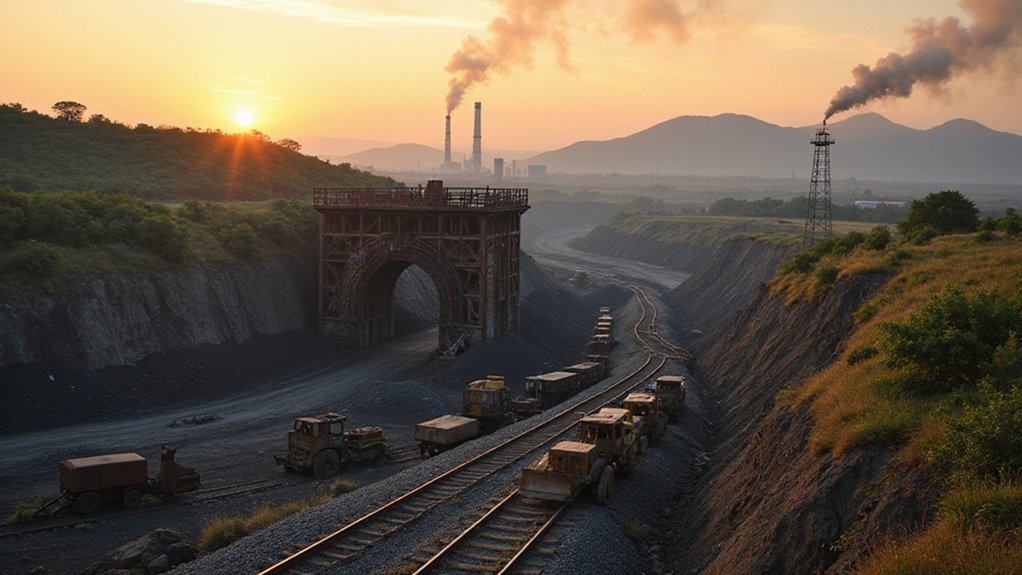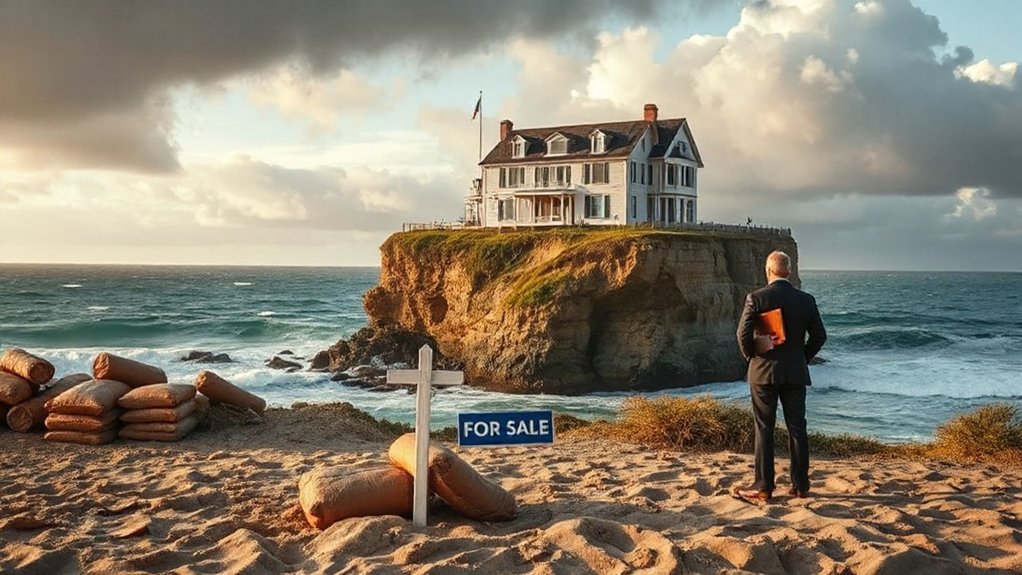While scientists warned us for decades, climate breakdown has arrived—and it’s not just “change” anymore. It’s a full-blown systemic collapse of our planet’s life-support mechanisms. The term “breakdown” isn’t hyperbole; it accurately describes what happens when we blast past tipping points that have kept Earth habitable for thousands of years. We’re not talking about a slight temperature adjustment that means more beach days.
The numbers don’t lie. We’re speeding toward exceeding 1.5°C of warming by 2030, with each year breaking temperature records like they’re going out of style. Remember when “hottest summer ever” was remarkable? Now it’s just Tuesday. Urban areas cook like giant concrete frying pans, creating heat islands where vulnerable populations literally bake.
Extreme weather has gone from occasional significant event to regular programming. Hurricanes, floods, and wildfires aren’t just “bad luck” anymore—they’re climate breakdown’s greatest hits album. And guess what? These disasters release even more carbon. It’s like the planet has a fever and the fever causes more fever. Brilliant system we’ve created.
The health impacts are already here. Heat stress, spreading diseases, worsening air quality. Climate anxiety is real, too. Hard not to feel a bit doomed when the news shows another ecosystem collapsing. A 2021 global survey found that 60% of youth are “very worried” about climate change, with many experiencing symptoms from insomnia to existential dread. This overwhelming distress often manifests as intrusive thoughts about environmental destruction that can disrupt daily functioning. Coral reefs? Dying. Forests? Burning. Arctic ice? Melting.
For many communities, climate breakdown isn’t some future threat—it’s current reality. Crops fail. Water becomes scarce. Homes become uninsurable or simply wash away. The economic toll is staggering, and surprise—it hits disadvantaged populations hardest. Environmental justice isn’t just a buzzword when your neighborhood floods while the wealthy relocate to climate-proof compounds. Even if we stopped all emissions today, the recovery timeline would still stretch for thousands of years as our oceans and atmosphere slowly rebalance.
Feedback loops accelerate everything. Melting permafrost releases methane. Shrinking ice means less solar reflection. The Amazon rainforest—Earth’s lungs—gasps for survival. We’re witnessing planetary systems failing in real-time, and the consequences will define generations to come.
References
- https://neurostimtms.com/climate-anxiety-2025/
- https://www.wearespruce.co/blogs/cleaning/climate-anxiety-and-8-ways-to-cope
- https://time.com/7280989/climate-anxiety-mental-health-young-people/
- https://sustainability.yale.edu/explainers/yale-experts-explain-climate-anxiety
- https://experiments.friendsoftheearth.uk/blog/coping-climate-breakdown-its-not-just-about-heat
- https://www.health.harvard.edu/blog/is-climate-change-keeping-you-up-at-night-you-may-have-climate-anxiety-202206132761
- https://www.nature.com/articles/d41586-024-00998-6
